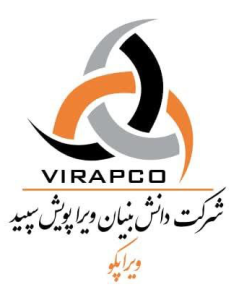مقالات و فناوریهای نوین
Reducing Seconondary Noise on Nanjing Mettro, China
ASTRACT
Pandrol Ltd. has been supplying iitts s low stiffness VANGUARD rail fastener to metro operatorss throughout China since 2004. The Pandrol VANGUARD ssyystem uses the principle of rubber in shear to support the rrunning rail by the web and the underside of the railheadd,, which allows the fastener to develop very low vertical ssuupport stiffness. This is demonstrated by the reduction of ssecondary (or re-radiated) noise inside buildings adjacent too metro tunnels. In 2009 Nanjing Metro made a trial fittingg of Pandrol VANGUARD on Line 1. It was retrofitted in ppllace of the existing slab track fasteners thus the performa annce differences between the two could be measured in ter rmms of the insertion loss. The China Ship Scientific Researrcch Centre was commissioned by Nanjing Metro to make reellevant measurements of noise and vibration. This paper d dees scribes the results in terms of vibration measured inside thhee tunnel, the ground vi-bration above the tunnel and noisee inside a building above the trial site.
SAFE AND SECURE PUBLIC TRANSPORT
:Social safety
Case Amsterdam metro system.Quality control measurement of a MSS after 30 years of operation
Introduction
An investigation into the effectiveness of one of the first mass-spring systems (MSS) in Switzerland is currently ongoing. After 30 years of operation, the vibration-reducing lightweight MSS is still performing without faults, despite the elastic bearing of the slab now being partially submerged in water. Vibration engineering experts Adrian Egger and Markus Heim provide further insight.
THE DYNAMIC TESTING OF ELASTOMERS
Introduction
Elastomers are finding wider and wider applications throughout industry. For example, the
automotive industry is continually attempting to improve fuel efficiency. The resulting reduction
in body and engine weights put increasing pressure on suspension and sound insulation designers
to meet the car buyers demands for improved ride quality and quiet cars. Designers are no
longer satisfied with simple static performance data but need data that assists the design of
complex systems involving elastomeric components.
A difficulty often encountered lies in the communication problems between the materials
technologist, the component designer and the test equipment manufacturer. This paper attempts
to try to clarify some of the confusing terms in dynamic testing and point out some to the
potential problems, which can be encountered by those unfamiliar with dynamic testing.
